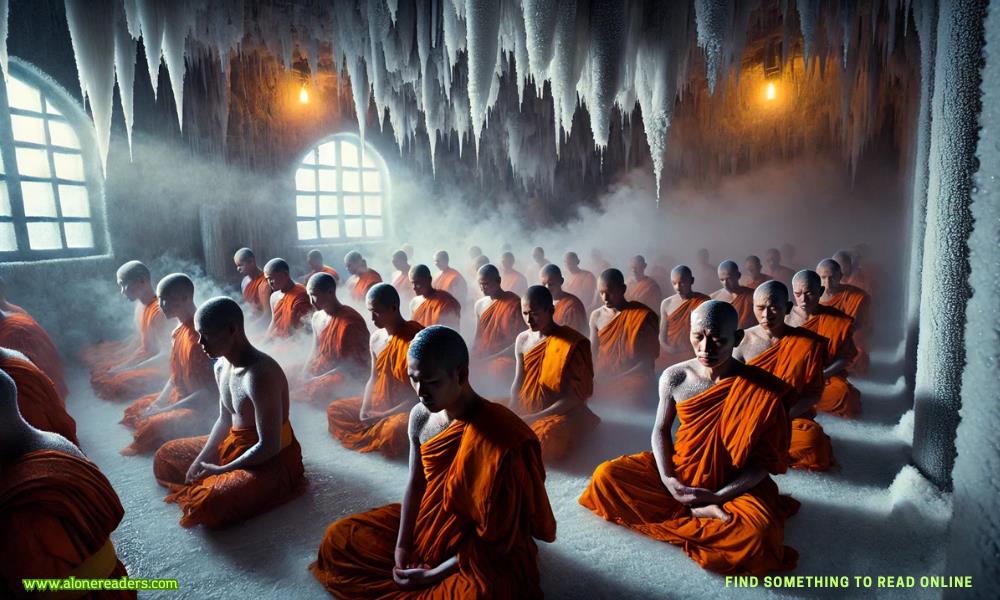
Deep in the remote monasteries of the Himalayas, a group of Tibetan monks practice an ancient and mysterious meditation technique that allows them to raise their body temperature at will. This remarkable ability has been witnessed and documented by scientists, who have seen these monks dry soaking wet sheets draped over their bodies while sitting in freezing rooms. The practice, known as Tummo meditation, is a testament to the incredible power of the human mind and the profound control that can be achieved over bodily functions through discipline and deep meditation.
Tummo, which translates to "inner fire" in Tibetan, is a specialized form of meditation practiced for centuries by Tibetan Buddhist monks. It is part of a larger system of techniques aimed at mastering both the mind and body, allowing practitioners to achieve heightened states of consciousness and extreme physical resilience. The monks who practice Tummo meditation can generate significant heat from within, even in conditions that would typically lead to hypothermia. This ability has fascinated both spiritual seekers and scientists, leading to studies that attempt to uncover the mechanisms behind this phenomenon.
Scientific investigations have revealed that Tummo meditation involves a combination of controlled breathing, deep concentration, and visualization. By focusing on generating an internal fire, monks use rhythmic breathing techniques and mental imagery to create warmth within their bodies. The process involves taking deep, controlled breaths while engaging in visualization exercises where they imagine flames rising within them, often centered in the lower abdomen. This intense mental focus, combined with the specific breathing patterns, leads to physiological changes that result in an actual increase in body temperature.
In one of the most famous studies conducted on Tibetan monks practicing Tummo, researchers observed them sitting in a freezing monastery room, draped in sheets soaked in ice-cold water. Instead of succumbing to the extreme cold, the monks entered a meditative state and began the Tummo practice. Astonishingly, within minutes, steam started rising from the sheets as the monks' bodies generated enough heat to dry them completely. Further studies using thermographic imaging confirmed that their core temperature increased significantly, particularly in the extremities, which typically lose heat first in cold environments.
This ability challenges conventional understanding of human thermoregulation. Normally, the body maintains a stable internal temperature through automatic processes, but these monks demonstrate that it is possible to override natural responses using mental discipline. Some scientists believe that Tummo meditation stimulates the sympathetic nervous system, activating processes that generate heat through increased metabolic activity and oxygen consumption. The practice may also involve the release of certain hormones that help regulate body temperature.
Beyond its implications for scientific research, Tummo meditation has also inspired modern wellness movements. Techniques derived from Tummo have influenced contemporary breathwork practices, most notably the Wim Hof Method. Developed by Dutch extreme athlete Wim Hof, this method involves controlled hyperventilation, cold exposure, and mental training, enabling practitioners to endure extreme cold, boost immune function, and improve overall resilience. While Hof has popularized these techniques for modern audiences, the foundation of his method is deeply rooted in the ancient wisdom of Tibetan monks.
Tummo meditation is not just about generating heat; it is considered a powerful spiritual practice that fosters deep inner transformation. In Tibetan Buddhism, it is believed that mastering Tummo allows practitioners to access higher states of consciousness, overcome fear, and achieve enlightenment. The ability to control one's internal environment symbolizes ultimate mastery over the self, a key goal in many meditative traditions. Those who practice Tummo describe profound experiences of inner warmth, joy, and expanded awareness, reinforcing the belief that meditation is not merely a relaxation technique but a gateway to profound human potential.
Despite the astonishing capabilities demonstrated by Tummo practitioners, this meditation technique remains largely inaccessible to most people. It requires years of dedicated training under the guidance of experienced teachers, along with a disciplined lifestyle that includes deep spiritual practice. However, simplified versions of breathwork and visualization exercises inspired by Tummo are increasingly being incorporated into modern mindfulness practices, offering people a glimpse into the incredible power of the mind over the body.
The implications of Tummo meditation extend beyond spiritual and scientific curiosity. As researchers continue to explore this practice, there is growing interest in its potential applications for health and well-being. If the techniques used by Tibetan monks can be adapted for wider use, they may offer new ways to enhance physical resilience, improve mental focus, and even help people cope with extreme conditions. Already, athletes, military personnel, and biohackers are exploring controlled breathing and meditation techniques to optimize performance and endurance.
The ability of Tibetan monks to raise their body temperature enough to dry wet sheets in a freezing room remains one of the most astonishing examples of mind-body mastery. It challenges our understanding of human capabilities and serves as a powerful reminder of the untapped potential that lies within. Whether viewed through a scientific lens or as a spiritual discipline, Tummo meditation offers a fascinating glimpse into the profound connection between the mind and body, proving that with enough training and focus, the impossible can become reality.